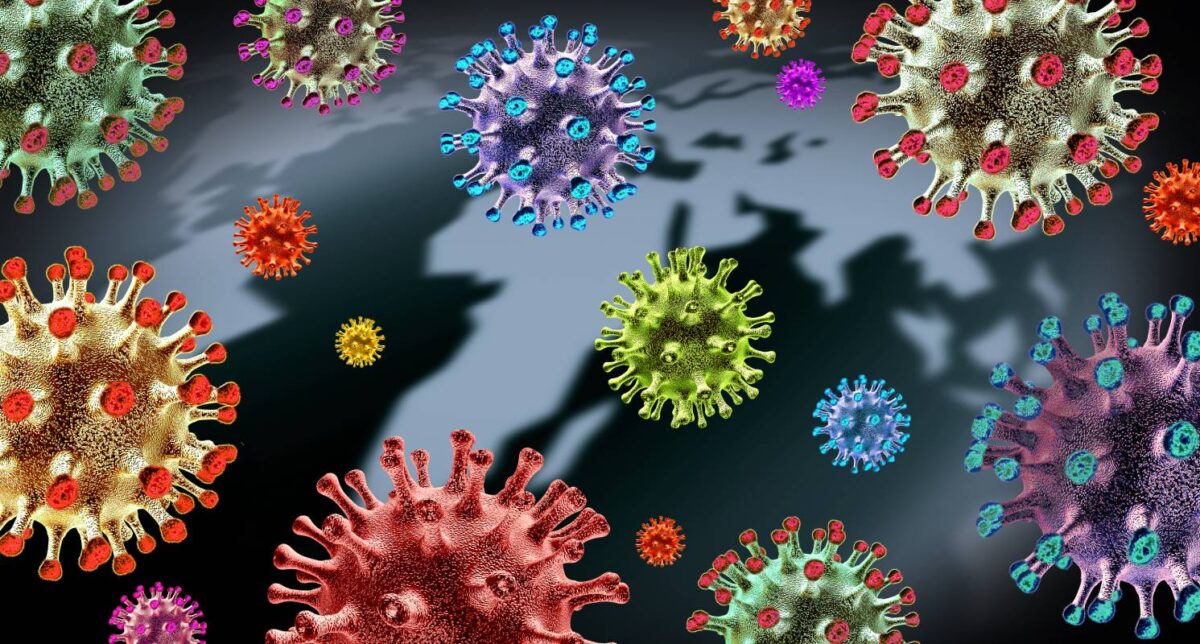Possibility of a Broad-Spectrum Vaccine for Sarbecoviruses

SARS-CoV-2 is the virus behind the COVID-19 (Coronavirus Disease 2019) pandemic. SARS refers to the viruses’ ability to cause severe acute respiratory syndrome; the original SARS-CoV virus emerged as an outbreak in 2002-2003 (Tan et al, 2021). These viruses are classified in the betacoronavirus genus and make up the sarbecovirus (betaCoV-B) subgenus. Basic features of sarbecoviruses include that they are enveloped, have single-stranded RNA, and infect human target cells via the ACE-2 receptor (Cao et al, 2021). They are identified by their spike, envelope, and membrane proteins. Both SARS-CoV and SARS-CoV-2 use a receptor binding domain (RBD) on their spike protein to interact with the human ACE-2 receptor (Cao et al, 2021). Zoonotic SARS-related-coronaviruses (SARSr-CoV) in bats have also been found to interact with ACE-2 receptors. This means it is possible that they can be transferred to humans and have potential to emerge as highly pathogenic human viruses (Cao et al, 2021). Although SARS-CoV-2 shares approximately 80% of its genome with SARS-CoV, antibodies from infection with one virus do not necessarily protect someone from the other (Tan et al, 2021). Similarly, SARS-CoV-2 mRNA vaccines have been found to be ineffective against infection from zoonotic coronaviruses (Martinez et al, 2021). Due to the high transmissibility of sarbecoviruses, creating broad-spectrum therapeutics and vaccine against them could help contain future infections, including different variants of concern for SARS-CoV-2 and emerging zoonotic viruses (Martinez et al, 2021).
A vaccine antigen teaches the body to recognize a virus or an important part of a virus, such as the RBD. The goal of the vaccine is to produce neutralizing antibodies against the target; antibodies that are not fully neutralizing can lead to vaccine-associated disease enhancement (VADE), which causes the release of immune chemical signals and can worsen symptoms of infection (Cao et al, 2021). A broad-spectrum vaccine would depend on the body’s ability to produce cross-reactive and cross-neutralizing antibodies, antibodies capable of recognizing and neutralizing the different target sarbecoviruses. RBD based vaccines have been shown to have a stronger neutralizing antibody response and are thus the most likely candidates for a pan-sarbecovirus vaccine (Cao et al, 2021).
Research has identified some neutralizing antibodies that recognize the receptor binding domain of different sarbecoviruses and are suitable for vaccine research. For example, 7B11 prevents binding to ACE2 and neutralizes both SARS-CoV and SARS-CoV-2 (Cao et al, 2021). 47D11 is also able to neutralize SARS-CoV and SARS-CoV-2, but the mechanism for how it does this is unclear and requires more research (Cao et al, 2021). VHH-72-Fc is an antibody isolated from llamas and engineered for humans and is able neutralize both SARS-CoV and SARS-CoV-2 (Cao et al, 2021). Another antibody, S309, recognizes different sarbecoviruses from humans and animals (Cao et al, 2021).
One new study (in preprint and yet to be peer reviewed) suggests that a strong candidate for a pan-sarbecovirus vaccine is the DH1047 antibody. DH1047 was able to neutralize multiple variants of SARS-CoV-2 and other zoonotic and human sarbecoviruses. It was found to provide prophylactic protection in a monkey trial using a nanoparticle vaccine (Martinez et al, 2021). Another study found that people who have previously had SARS-CoV and are then vaccinated for SARS-CoV-2 can produce pan-sarbecovirus neutralizing antibodies, suggesting a possible strategy of “cross-clade priming and boosting.” The goal of this strategy is for the body to create antibodies that are more likely to target sequences that are conserved across the sarbecoviruses (Tan et al, 2021).
Vaccine efficacy depends on more than just the antigen. Adjuvants can act as a delivery system for the antigen, enhance the immune response, and reduce the needed amount of antigen (Cao et al, 2021). Many common adjuvants, such as alum, are used to deliver vaccines intramuscularly or intradermally. However, with RBD-based vaccines, intranasal administration may produce stronger systemic and local lung response (Cao et al, 2021). An adjuvant called PS-GAMP works as a delivery system to lung epithelial cells and has been used for an influenza vaccine that protects against multiple strains. This could potentially be useful for a pan-sarbecovirus vaccine as well (Cao et al, 2021).
References
Cao M, Su X, Jiang S. Broad-Spectrum Anti-Coronavirus Vaccines and Therapeutics to Combat the Current COVID-19 Pandemic and Future Coronavirus Disease Outbreaks. Stem Cell Reports. 2021;16(3):398-411. doi:10.1016/j.stemcr.2020.12.010
Martinez DR, Schaefer A, Gobeil S, et al. A broadly neutralizing antibody protects against SARS-CoV, pre-emergent bat CoVs, and SARS-CoV-2 variants in mice. Preprint. bioRxiv. 2021;2021.04.27.441655. Published 2021 Apr 28. doi:10.1101/2021.04.27.441655
Tan C-W, Chia W-N, Young BE, et al. Pan-Sarbecovirus Neutralizing Antibodies in BNT162b2-Immunized SARS-CoV-1 Survivors. N Engl J Med. August 2021. doi:10.1056/nejmoa2108453
